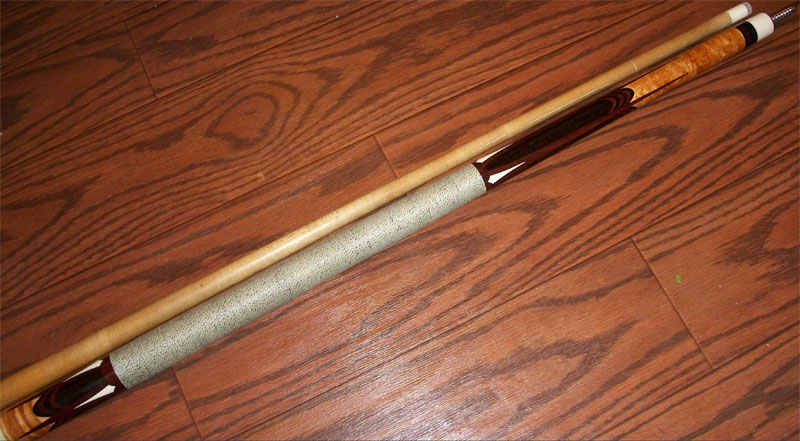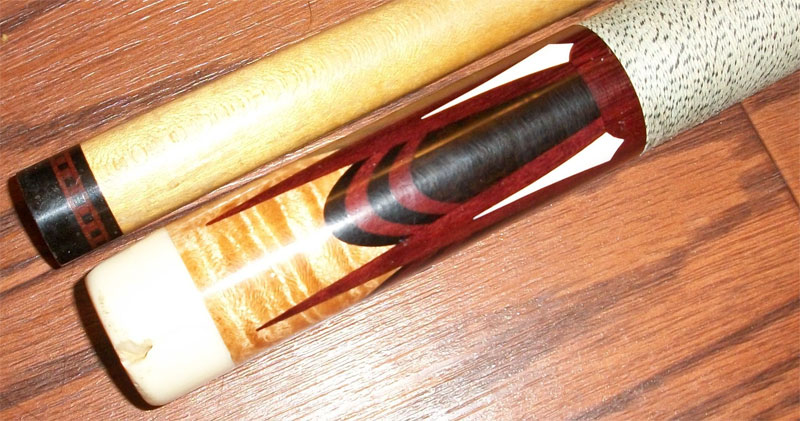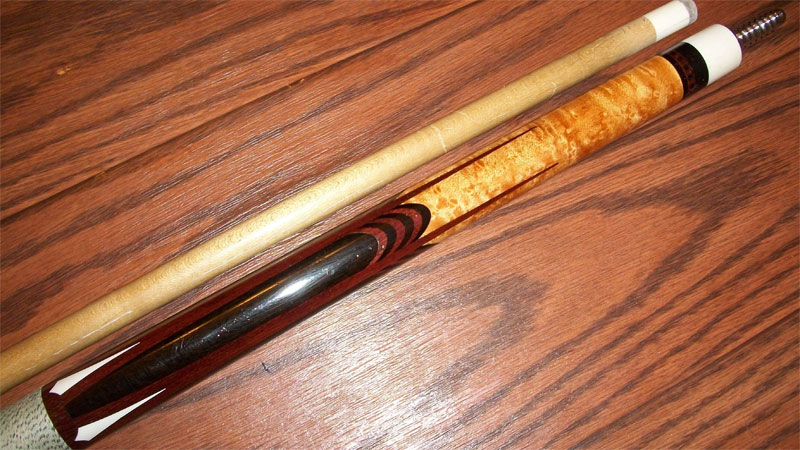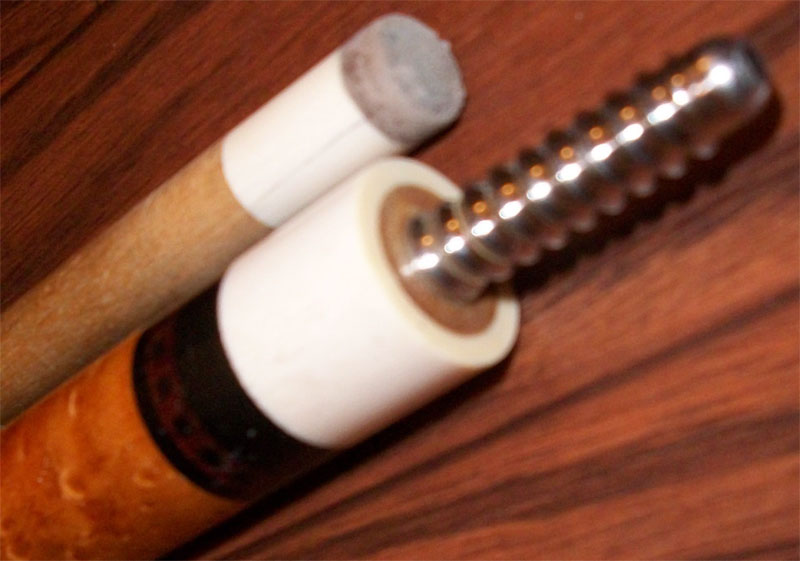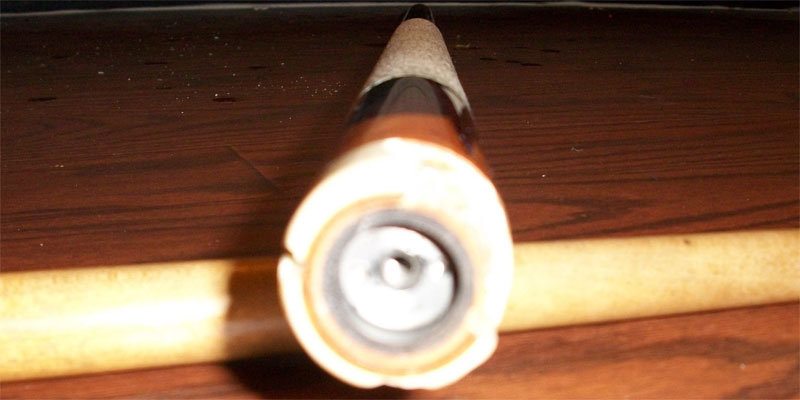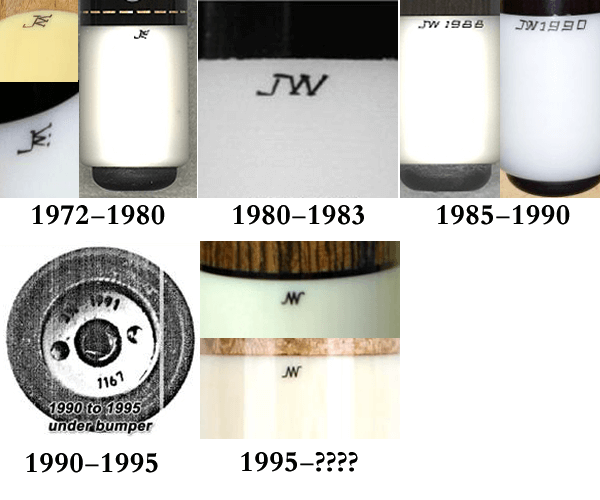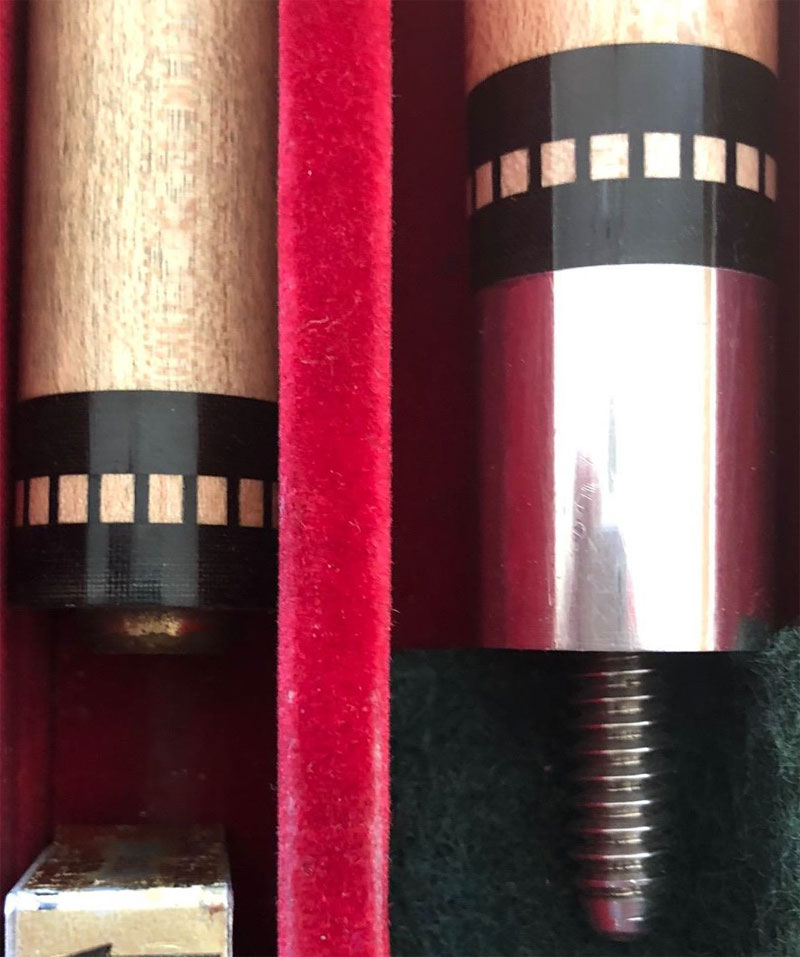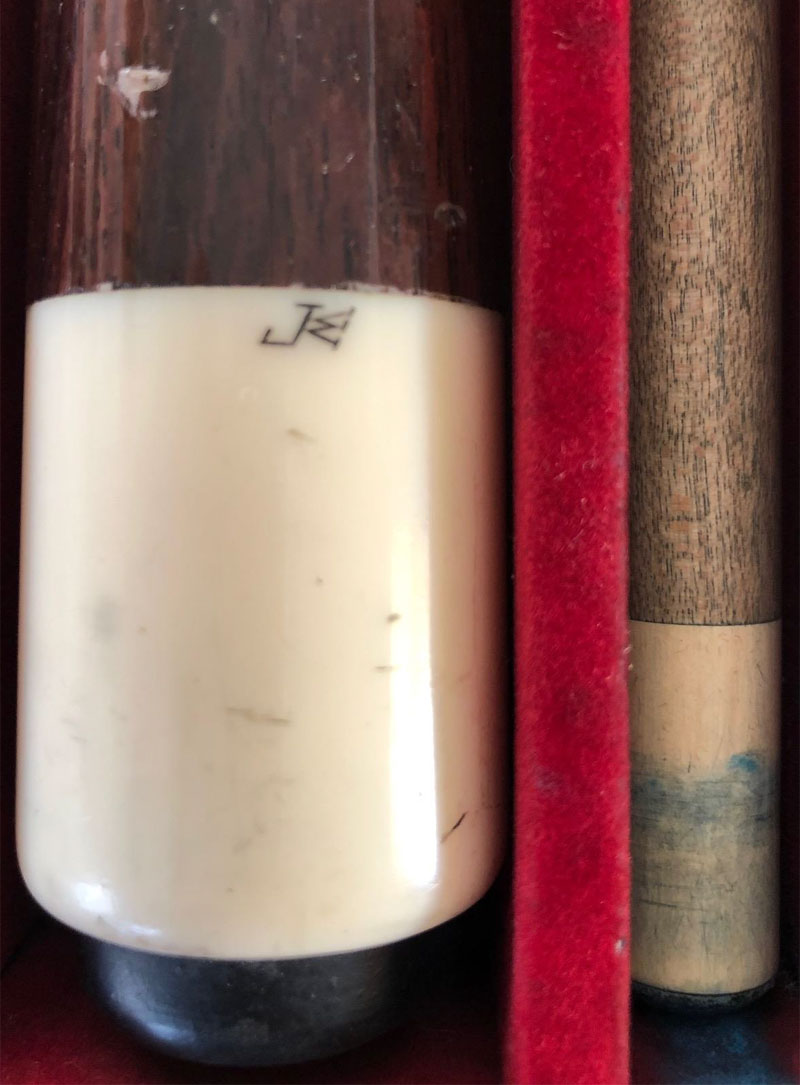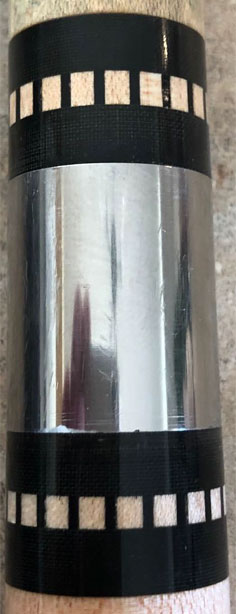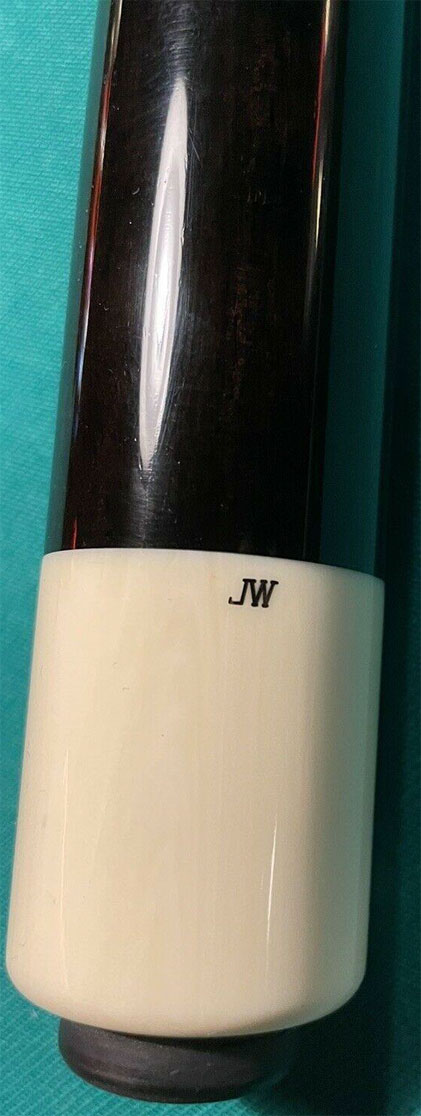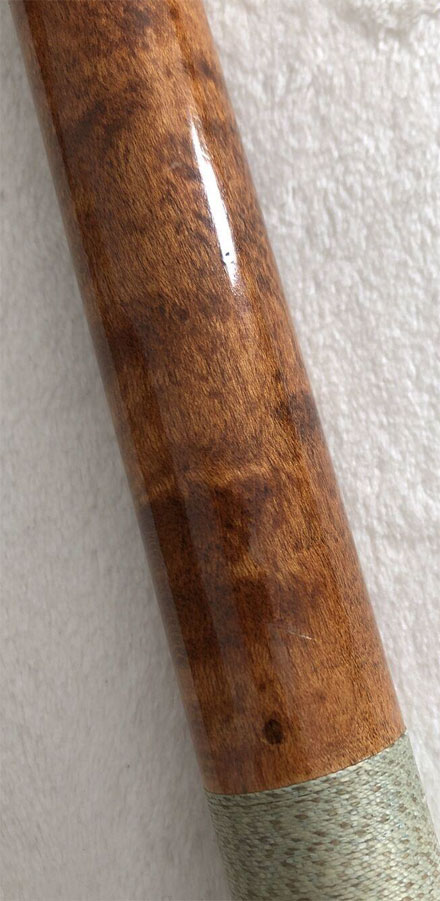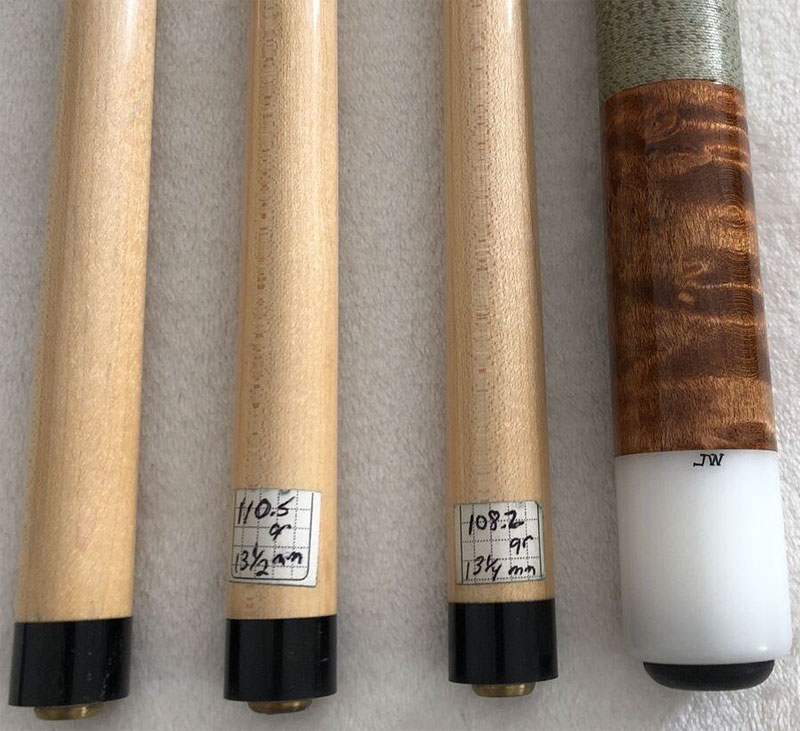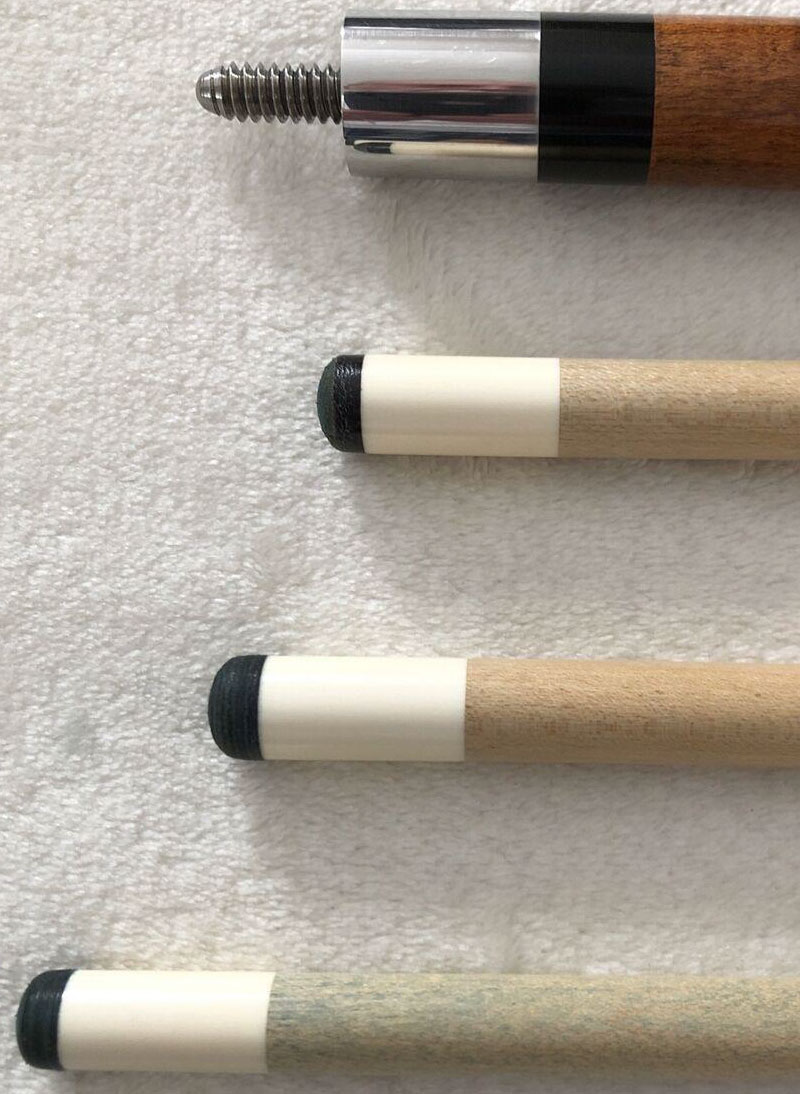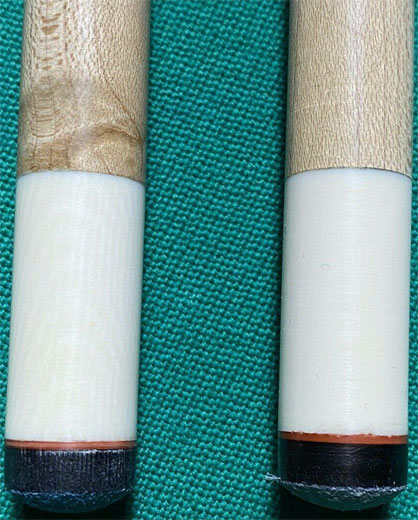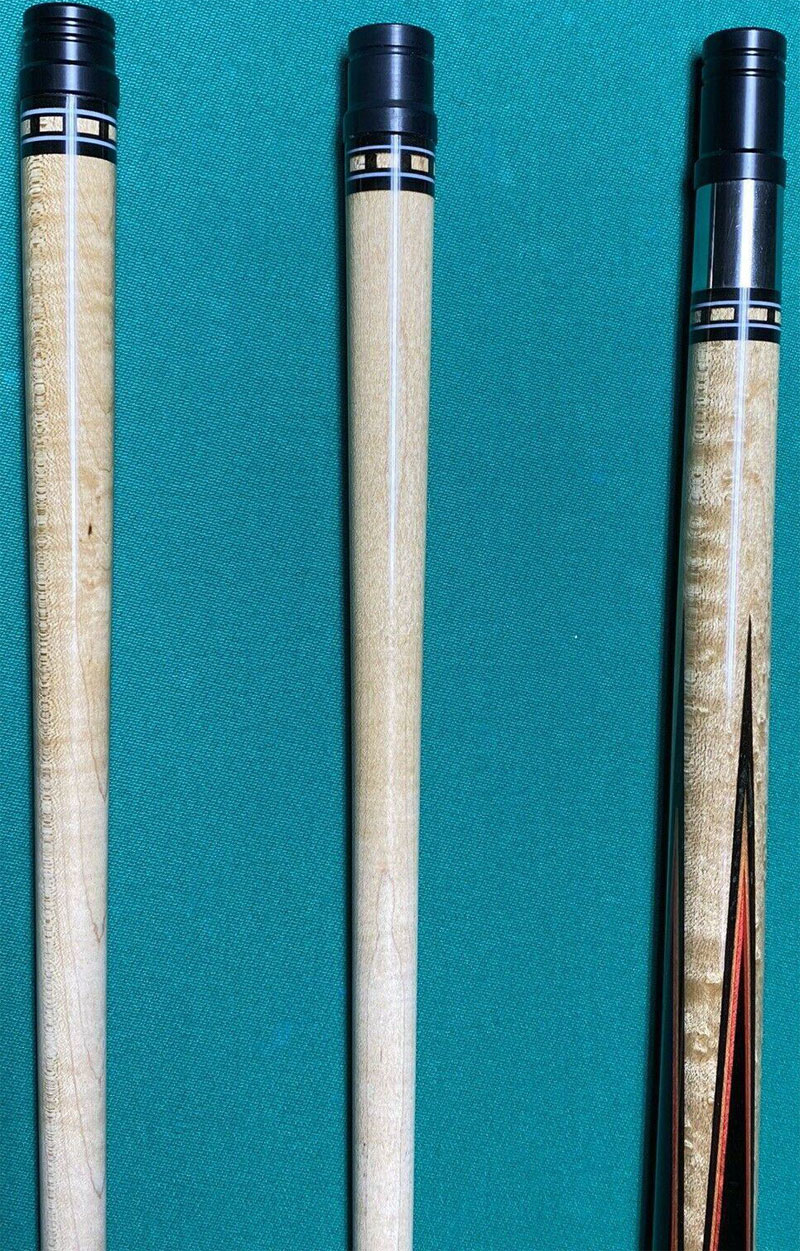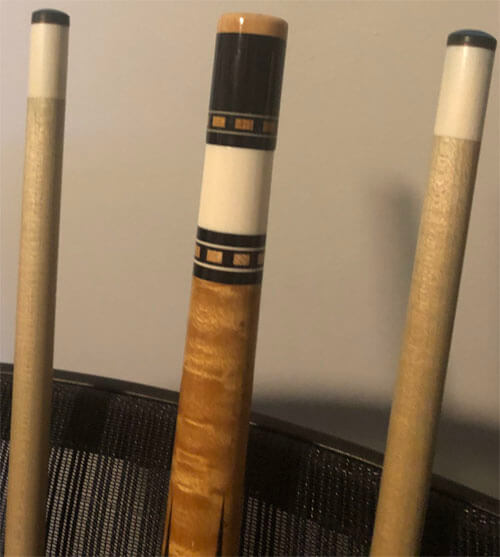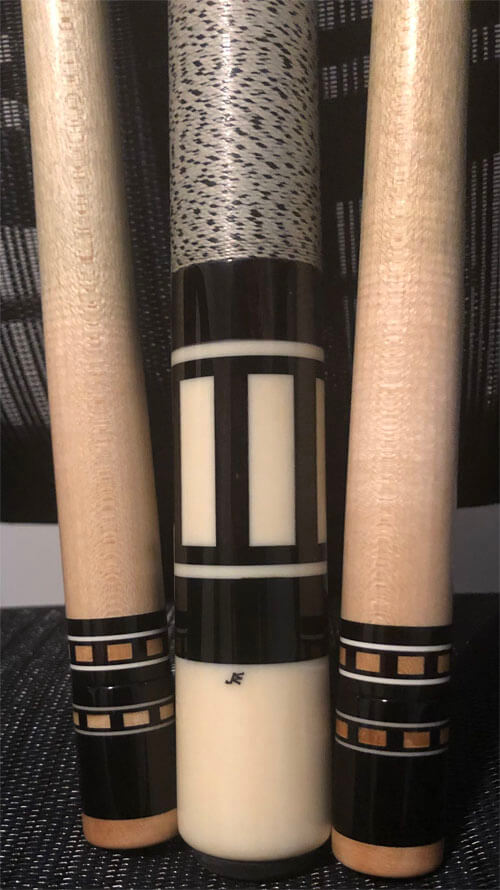Authenticate a Josswest Cue 1995
10/13/2019 6:25:33 PM
Authenticate a Josswest Cue 1995
I came across this unique butterfly cue for sale.
The owner says it is a Joss West cue from 1995 and that Bill Stroud built 6 of these, each with different wood combinations, for a dealer named John Wright.
The cue is in need of a complete restoration and before I purchase it and take on this project I would like to get confirmation that this is in fact a Josswest cue as the seller claims.
I know there are people on this forum that are a lot more knowledgeable than myself when it comes to pool cues, so I thought I would put it out there for discussion.
Authenticate a Josswest Cue 1995
Replies & Comments
 billiardsforum on 12/9/2019 2:53:14 PM
billiardsforum on 12/9/2019 2:53:14 PMTim, are there any numbers on that bolt? The photo is blurry.
TCummings on 12/9/2019 5:01:56 PM
Thank You for your response concerning the Joss West cue I.D.
The pictures were emailed to me by an out of state seller. I have not seen the cue in person. The seller said it was a Josswest weight bolt.
I decided to pass on the cue, there were too many questions and he was asking quite a bit for the condition of the cue. It was a deal with big risk for little reward.
I thought it was an interesting cue though.
 billiardsforum on 12/9/2019 5:14:28 PM
billiardsforum on 12/9/2019 5:14:28 PMAlways good to trust your gut on these things.
The reason I asked is that if the Josswest cue was in fact made in 1995, it may well have a weight bolt with the year stamped in the head of the bolt.
This is the Josswest logo guide I've put together (and there are others similar to this). Note the bottom left portion "1990-1995":
TCummings on 12/9/2019 5:48:20 PM
Thank You for the Joss West information it may come in handy in the future.
Sledgehammer on 12/9/2021 9:48:16 AM
A few notes for you on the Josswest cue authentication question above:
- Bill Stroud never used ivory joints. His were always steel, and you can see why when looking at the cracked plastic butt cap in the images you have provided.
- Speaking of butt caps, I don't see the
JWlogo on the butt cap. EVERY Josswest cue he ever made had theJWtrade mark in some form (be it sideways or other) on the butt cap, regardless of who he made them for. - Bill used real ivory for the ferrules and butt caps in Josswest cues. For MOST of his cues, this is true, until sometime after the U.S. banned the import of ivory in 1989. Keep in mind that there was already a lot of ivory in this country when the ban took effect. That meant that the use of ivory continued in custom pool cues for several years after the ban took effect. Consequently a Stroud cue made in 1995 could have had ivory ferrules and an ivory butt cap. However in the images you have provided, it looks like plastic. It is too late now of course, but if you really wanted to find out if it was real ivory, you can use these 2 methods:
- Heated Needle Method: Heat a sewing needle until it is red hot and press it into the butt cap. Do this on the bottom end of the butt cap where it won’t be noticeable. If it is plastic the needle will heat the plastic and easily sink into the butt cap. If it is real ivory, it will not. It is kind of fun doing this in front of the seller who insists it is real ivory because if that is true he has nothing to worry about. If it is not true then he damn well knows it and will most likely either squirm a bit while you conduct the test, or he will refuse to let you do it all.
- Black Light Method: Virtually all plastics and resins fluoresce blue or a blue-white color under long-wave black light. Genuine ivory usually fluoresces pure white. This test can vary depending on whether the ivory has a patina or not, but it should still fluoresce some form of white, not blue, if it is real ivory.
- The dark colored material in the matching ring work on the butt section and the shaft would have been ebony and in the images of your cue, they look to be plastic.
Conclusion:
Looking at the cue images in the question above, combined with the related story behind it, makes me believe it is not a real Bill Stroud cue nor a JossWest cue. While I realize you passed on this cue some time ago, I have added what I know so it may possibly help others down the road.
I have recently noticed at least two fake JossWest cues for sale on eBay and one of them sold to some poor bastard who did not do his homework. They are likely being made in China by some dirt bags trying to profit from the fact that Bill’s death in March 2020 is driving the price of genuine Bill Stroud / JossWest cues up.
Here are some images of two of my JW pool cues for reference:
Authentic JW Cue #1
Authentic JW Cue #2
More importantly, here are some images of what I believe are non-authentic JossWest cues that are (or were) on eBay for sale as authentic Josswest cues.
I would be very interested to know what others think of these cues. In my opinion they are not genuine JossWest pool cues made by Bill Stroud. I have not said what specifically about them seems phony because I want to see if others observe the same things I do.
Non-Genuine Josswest Cue from eBay #1
Non-Genuine Josswest Cue from eBay #2
 billiardsforum on 12/18/2021 8:31:19 AM
billiardsforum on 12/18/2021 8:31:19 AMThanks so much for sharing your knowledge on Bill Stroud and JossWest cues. I definitely learned a little from that.
I'm probably not on the right track, but for the 2nd non-authentic example, I would guess it's the seemingly poor quality of the veneer points is evident in that last image of the forearm.
Sledgehammer on 12/19/2021 8:11:28 PM
Alright so I didn’t get many takers when asking others to weigh in with their comments about what I perceive to be two non-genuine JossWest cues. I think it is best to get this information out there where it may help someone who may be contemplating purchase of a JossWest.
So without further ado, here is why I think the two cues previously mentioned and shown, are not real JossWest cues.
First Fake on eBay:
- Bill used almost exclusively Maplewood on the (very few) butt sections he made that did not have points. This cue has no points, yet the wood grain does not look like maple, it looks more like tiger-wood or something with a lot of cross-grain rather than maple. The absence of birds-eye is what is remarkable.
- Assuming the butt is not maple, a cue he made with that much cross-grain would have had points, and this cue has none.
- The butt cap looks like cheap plastic (see text pertaining to ivory elsewhere in this thread), and it should have been ivory or a different, higher quality plastic. It is my contention that even though Bill did use plastic for some of his ferrules and butt caps, such plastic would appear a duller white by now, about 35 years later. I base this on the hue given off the cap as much as the color itself, and by comparing it to other known genuine examples of his work. It almost looks like it has a “clear-plastic” or translucent hue to it, even though it is white in color. And speaking of color, the color itself of the cap appears bright white, not a more basic white that Stroud would have used on the cap. This means the appearance of the butt cap is wrong even if it were somehow preserved in an “anti-aging chamber” of sorts, or if it was in a humidity and temperature controlled environment (however unlikely either of these two possibilities are).
- The font of the “JW” on the butt cap is too light, not dark enough.
- The font of the “JW” on the butt cap is too thin.
- The edges of the font of the “JW” on the butt cap are not crisp enough.
- The bumper on the butt cap is tapered and a JossWest cue stick from this era would have a straight-walled, non-tapered bumper.
- The overall appearance of this pool cue is unimpressive, which is remarkable in and of itself, given what we know about the cues Bill Stroud produced. He made very few cues like this one without points. Maybe some of his very early work had no points but very few if any had no points from this era (known by the non-sideways W in the “JW” logo to be post 1980). This is simply because the complexity of his work grew along with his confidence as a custom cuemaker, throughout his career. The same can be said for the lack of complexity in the ring work on the shafts, above the joint, and on the forearm below the joint. Again, too basic for what Stroud was producing by 1981.
Second Fake on eBay:
This is a bit better effort as fakes go, but still a fake nonetheless, in my opinion.
- The bumper on the butt cap is too short for this era.
- The “JW” logo with the sideways W is wrong. The J should extend below the “height” of the W, making it larger (taller) than the W, and it does not. Keep in mind the “height” of the W is actually the width of the W because the W is rotated clockwise 90 degrees.
- The point work, meaning the points within the points and the upper points themselves relative to each other, are not in any way well done. The lines of these points are far from crisp, and they are different heights. Note: This was previously pointed out by “billiardsforum.” Get it => “pointed out.” Okay not that funny but I’m trying to stay focused here and laugh a little because my 9-Ball opponent for the evening had something come up and he cancelled on me. But hey, I’m not bitter. OK a little I guess. But who wouldn’t rather be playing than reading through forums? But I’ve digressed, badly.
- The ring work is not elaborate enough for a JW cue with points. Many had the 16 Boxes, much harder to do, and much more what we would expect to see on a Stroud cue.
- It may simply be the light reflecting off the blue background making the cross-section lines in the ring work look blue. If these lines are blue these are not JW shafts or a JW butt section. He would not have used a color within the ring work. And especially a color not already in the sleeve or the forearm (no the linen wrap does not count). If these lines are not blue then they are white, which is also wrong. The lines should be natural maple.
So that is why I believe they are fake JW’s, hardly the work we have come to expect from arguably the best cuemaker to ever turn down a nice piece of maple on a lathe.
What I have written is based on experience with JW cues and owning several over the years.
I know there are many experts out there who know more than I do so please chime in if you have information contradictory to my insights, or if you have anything to add. Doing so will only help preserve the legendary name of Mr. Stroud and JossWest cues.
These two are not the only non-genuine JW cues I have seen. I firmly believe many more of these cues are being made in China as I type. There will be more imported and sold as genuine here in the U.S. and throughout the world.
mrk20 on 4/21/2023 10:06:49 AM
@Sledgehammer - You mentioned that Bill Stroud never made a cue with an ivory joint.
I found that to be interesting, considering that my Josswest cue has a solid ivory joint and ivory ferrules on both shafts.
Authenticate a Josswest Cue 1995
- Title: Authenticate a Josswest Cue 1995
- Author: TCummings (Tim Cummings)
- Published: 10/13/2019 6:25:33 PM
- Last Updated: 12/9/2019 2:45:17 PM
- Last Updated By: billiardsforum (Billiards Forum)

